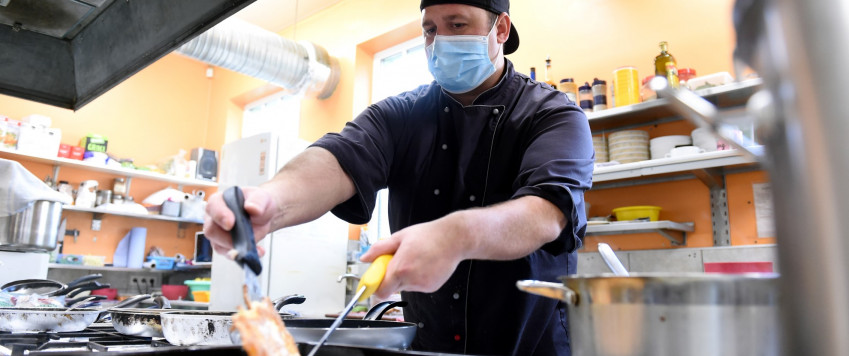The situation in the labour market remains uneven

As the warm weather set in, the number of infections abated, leading to a gradual lifting of containment measures in the spring and summer period. As a result, the second quarter saw a rapid recovery in the economic activity, being also reflected in a fall in the unemployment rate. According to the labour force survey data of the Central Statistical Bureau (CSB) for the second quarter, the actual unemployment rate has decreased to 7.9%.
The seasonal factors have also a role to play in the current decline in the unemployment rate since the season of agricultural works has begun and the local tourism activities have intensified. Likewise, one may undoubtedly claim that the availability of the government support prevented an upswing in unemployment during the crisis.
Prolonged furloughs of employees contributed to an increase in the number of economically inactive persons at the beginning of the year.
However, a part of people returned to their jobs already in the second quarter, thus adding to the number of the persons employed.
As the government support measures in the form of wage subsidies and furlough benefits expired in June, we can expect more people to become economically active again. However, not taking into account the return of the furloughed employees, employment growth might not be very rapid in the coming months, with the number of hours worked increasing at a faster pace. This is a result of both the concerns about the development of the epidemiological situation in autumn that may hinder the recruitment of employees in the sectors facing the threat of new restrictions and the mismatch between labour demand and supply.
According to the State Employment Agency data, the number of the current vacancies is growing, pointing to a recovery of the economic activity. However, the number of the current vacancies recorded in some occupational groups affected by the Covid-19 crisis and reporting a significantly lower number of employed persons (e.g. service and sales workers and clerical support workers) as compared to the fourth quarter of 2019 (before the crisis) is lagging behind the pre-crisis level.
The sentiment indicators for July published by the European Commission signal an increased caution, particularly among consumers.
Moreover, unemployment expectations of consumers have risen significantly, and this is likely to be attributed to concerns about repeated outbreaks of the virus and the deterioration in the economic situation as the autumn sets in. However, this pessimism seems exaggerated. The registered unemployment rate continues on a downward trend and the share of businesses referring to labour shortages as an essential drag on their activity has also increased. The employment expectations of businesses are above their long term average, suggesting a certain potential for the employment growth. It should be noted, however, that the above mentioned differences among sectors are also present in this case – businesses in manufacturing and construction project employment growth, while those in services and trade expect the existing situation to persist.
With autumn approaching, we can increasingly hear warnings about the possibility of a new wave of Covid-19 already faced by several European countries. Considering the low vaccination coverage in Latvia, one cannot feel safe, and this will influence the health indicators of both the population and the economy. However, the experience gained so far and the adjustment capacity are most likely to help prevent an upswing in unemployment.
Textual error
«… …»


